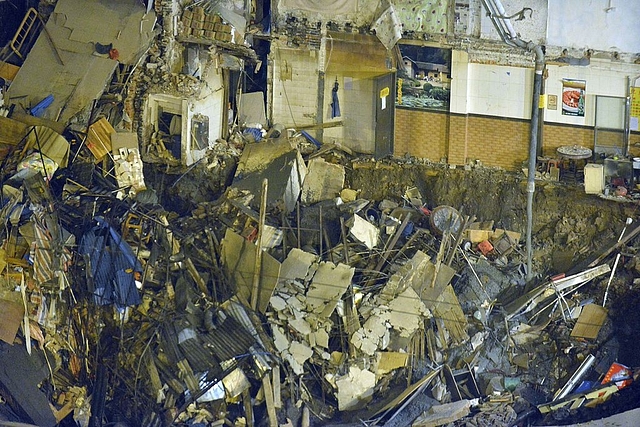
40 Die In A Building Collapse While China Mocks India’s ‘Dilapidated’ Rail Network
Forty people were killed when an under construction building collapsed in China today (24 November). The accident occurred at about 7 AM in China’s Jiangxi province when the platform of a power plant's cooling tower collapsed, Xinhua news reported.
The accident follows close on the heels of the Indore-Patna train accident on 19 November, resulting in the death of over 145 people, when Global Times, the hawkish mouthpiece of the Communist Party, took a dig at India, saying that accidents were common on “India’s dilapidated rail network”.
While India’s rail network is far from dilapidated, it certainly suffers from low investment and lack of modernisation. But things are no better in China. While the country boasts of a high-tech railways, more than 2,000 people die in rail accidents every year. Moreover, the state of industrial safety in China is dismal. The country has suffered a series of major industrial accidents over recent months blamed on corruption, disregard for safety and pressure to boost production amid a slowing economy.
A massive explosion at an illegal chemical warehouse in the northern port of Tianjin last year killed 173 people, most of them firefighters and police officers. In June 2015, 442 people were killed in the capsize on the Yangtze River of a modified cruise ship blamed on ‘poor decisions’ made by the captain and crew, while 81 people were killed in December when an enormous, man-made mountain of soil and waste collapsed on nearly three dozen buildings in the southern manufacturing center of Shenzhen. In July 2011, two high-speed trains with collided in China’s Zhejiang province, killing 40 people. In most of these cases, China was accused of cover ups to save itself from global embarrassment.
Between 2003 and 2012, a total of 877 major work safety accidents were reported in China, resulting in 16,795 deaths and 9,183 injuries. Only if the country can learn from its poor industrial safety record and low level of technological innovation, instead of claiming equivalence with the United States and the west, the 1.5 billion people that it is home to will have a better future.
As for India, it certainly lags behind due investment constraints, corruption, slow pace of modernisation, and, indeed, in calming technological and economic superiority over a neighbour.